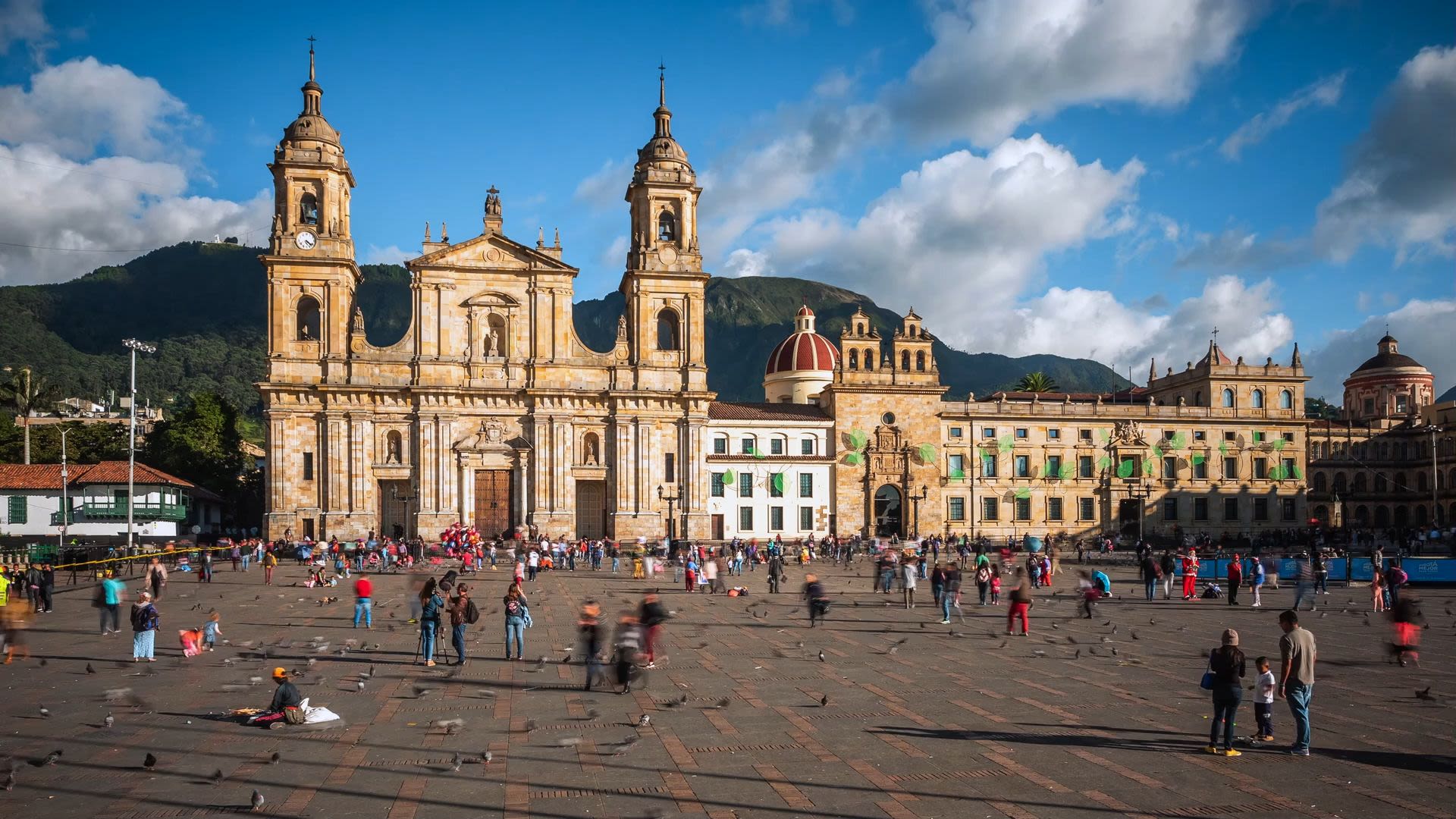Bogotá, Colombia: In the glare of El Dorado
3 min read
I was surrounded by hundreds, maybe thousands of pieces of pre-Columbian gold artefacts. Gleaming shapes representing jaguars, snakes, condors and all manner of anthropomorphic figures stared blankly at me, fixed side by side on a huge circular display. It created an effect akin to being inside a gargantuan golden temple. This was what the El Dorado of my imagination looked like, echoing the fantasies of European visitors down the ages, who once flocked to the Americas in search of a mythical city of gold.
Yet this was 2022 and I wasn’t lost in some far-flung jungle, but admiring one of the central halls of the Museo del Oro in Bogotá, Colombia’s renowned Museum of Gold. It holds an impressive collection of over 60,000 pieces, making it the largest cultural institution dedicated to gold metallurgy in the world. As I wandered its displays with Maria de la Paz, conservator at the museum, I mentioned my visions of glittering cities.
“There is a strong connection between the museum and the legend of El Dorado, but it is not quite what you think,” she corrected. “There are many real-life links to the legend across the Americas, but the most historically accurate origin story comes from Bogotá’s broader region and its indigenous people, the Muisca.”
The Muisca inhabited the Altiplano Cundiboyacense in around 1000 BC, but the peak of their cultural powers didn’t arrive until after the 7th century AD. Sadly, the Spanish conquest of the region later brought an abrupt end to their advanced civilisation.
“The Muisca didn’t build monumental structures like their more famous American counterparts, the Inca, the Aztecs and the Maya, but they left behind incredible artefacts that tell many stories,” smiled Maria, pointing to a tiny golden creation. “Right here, before your eyes, lies the origin of the legend of El Dorado.”
The item, known as the Muisca Raft, was surrounded by an impressive installation that made it appear as if it was floating in the air. Maria explained how it represented the ceremony that inspired the legend of El Dorado, more correctly known as ‘El Rey Dorado’ (or ‘The Golden King’). As I tried to make sense of the human figures on the tiny raft, she narrated its curious story.
“Every time a new Muisca chief, or Zipa, took over, his investiture ceremony included an initiation rite in Laguna de Guatavita. The Zipa would be covered in gold dust and would go out on a raft just like this,” she paused, pointing to the central figure towering at the back of the raft. “He was accompanied by hundreds of gold artefacts that would be thrown in the sacred waters as offerings to the gods, before the Zipa himself jumped in.”
To emphasise her point, Maria gestured to a photograph of Laguna de Guatavita, the most sacred of the Muisca lakes and where the ‘Golden Indian’ ritual was traditionally performed. To think that it was this that gave rise to the legend of El Dorado, a tale that led thousands of Europeans to these lands, causing countless deaths in pursuit of its mythical riches.



